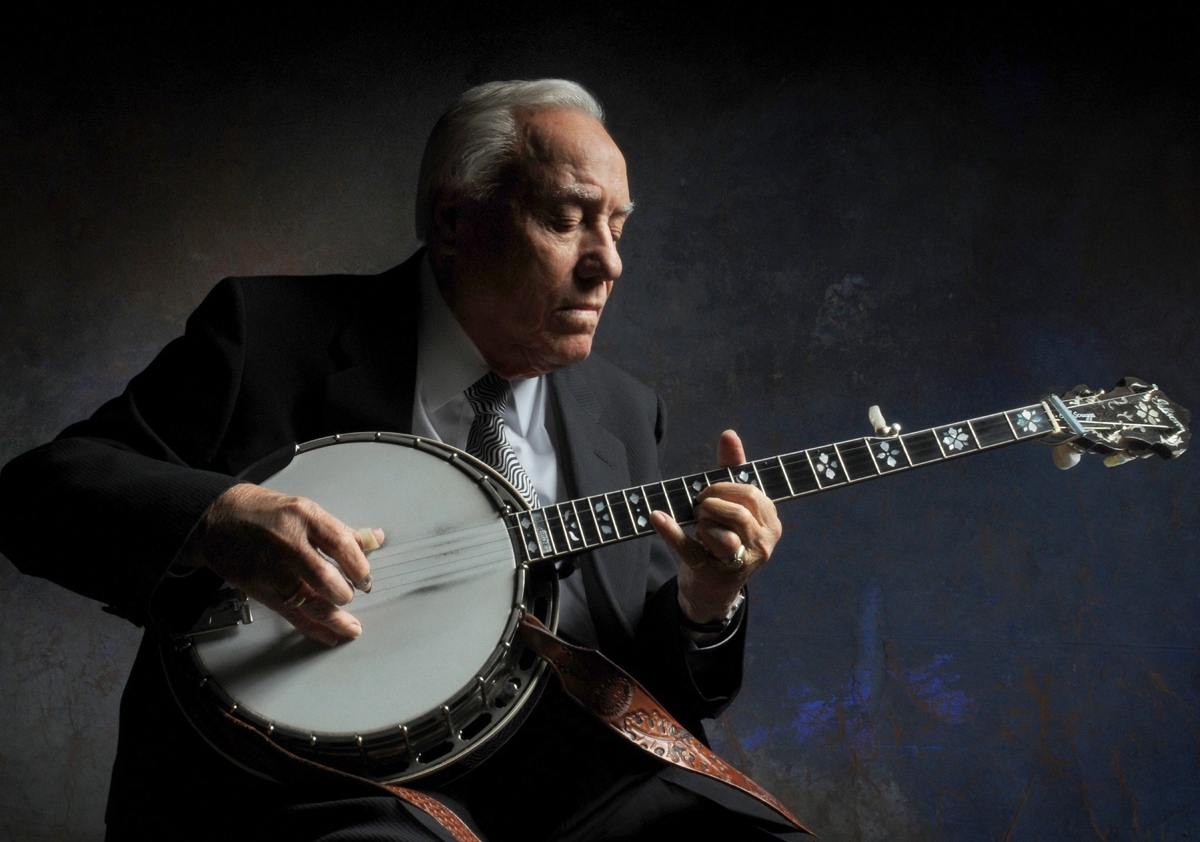Earl Scruggs, born in NC, began playing banjo at the age of four using a two-finger style. By the age of ten he had developed his own unique “Scruggs-Style Picking”. His first banjo, purchased from Montgomery-Ward, cost $10.95. He later bought a Gibson RB-11 used when he began playing professionally. The banjo closest to Earl’s heart, the Snuffy Jenkins Gibson Granada, was purchased for $37.50 in a SC pawn shop.
From 1941-1945 Earl worked in a mill but his urge to play music moved him to Knoxville, TN. In December 1945 Earl auditioned and joined Bill Monroe’s band which included bandmate Lester Flatt. Their band performances at the Grand Ole Opry stunned audiences. The recordings of Monroe’s band set the standards for what would become known as bluegrass music.
Earl teamed with Lester Flatt in 1948 to form a band with members Mac Wiseman, Jim Shumate and Howard (Cedric Rainwater) Watts and began The Flatt and Scruggs Show. They recorded twenty-eight sides for Mercury prior to signing with Columbia Records in 1950. To give Earl melodic precision and accuracy while playing his own “Earl’s Breakdown”, recorded in 1951, he invented “Scruggs Tuners”.
By 1953 Martha White Food Company sponsored the Flatt and Scruggs radio show, becoming one of music industry’s most successful business ventures. Louise, Earl’s wife, began managing the band by 1955, booking them in many non-traditional venues such as the first Newport Folk Festival in RI.
Paul Henning, TV creator, writer, and producer, saw them at a Los Angeles club and approached them about a new show called “The Beverly Hillbillies”. Three weeks after the show premiered on CBS, it was rated as the #1 television program. Louise and Henning coordinated the recording of “The Ballad of Jed Clamplett” which held the #1 position on the Billboard country charts and crossed over to pop charts. A live version of the song recorded at Carnegie Hall was later nominated for a Grammy.
In 1967 Warren Beatty and Earl collaborated on the music for the movie “Boonie and Clyde”. Earl used “Foggy Mountain Breakdown” throughout the movie and the recording reached both the country and pop charts to win BMI and Grammy awards in 1968. Flatt and Scruggs dissolved their partnership during this time.
Earl’s home was filled with music as his sons all developed musical interests and artist friends stopped by to play with Earl. Late in 1969 Earl and his sons Randy, Gary and Steve formed the “Earl Scruggs Revue”, influenced by many of their peers. Earl made it clear that if conventional styles proved to be synonymous with limitations, then they had no place in his music as demonstrated by the Revue and two films about his life. In 1975 a two-volume album celebrating Earl’s 25th Anniversary was recorded with thirty-nine artists. The Revue toured until 1980 and received accolades as one of the most inventive, respected and creative bands in history.
In the 1990s Earl continued to record, tour and make guest appearances. He released an all-new solo album on MCA in 2001, the instrumental “Foggy Mountain Breakdown”, featuring Steve Martin, Leon Russell, Vince Gill, Albert Lee and others, became one of the few songs recorded by the same artist to win a second Grammy.
In 2005 Earl was voted into the Country Music Hall of Fame and Museum followed by a special year-long exhibit to honor Earl and Louise’s contributions. His awards, too numerous to name, include National Medal of Arts Award, seventeen Grammy nominations, star on the Hollywood Walk of Fame and Honorary PHD from the Berklee college of Music in Boston.
Earl was a true inspiration throughout the world and is unmatched as a legendary leader in musical integrity and creative contribution. Peter Gelzinia wrote in the Boston Herald American, “Earl Scruggs may well go down in musical history as the man who took the banjo out of the pawnshops, down from the attic and from under the bed”. Earl Scruggs passed away March 28, 2012.
